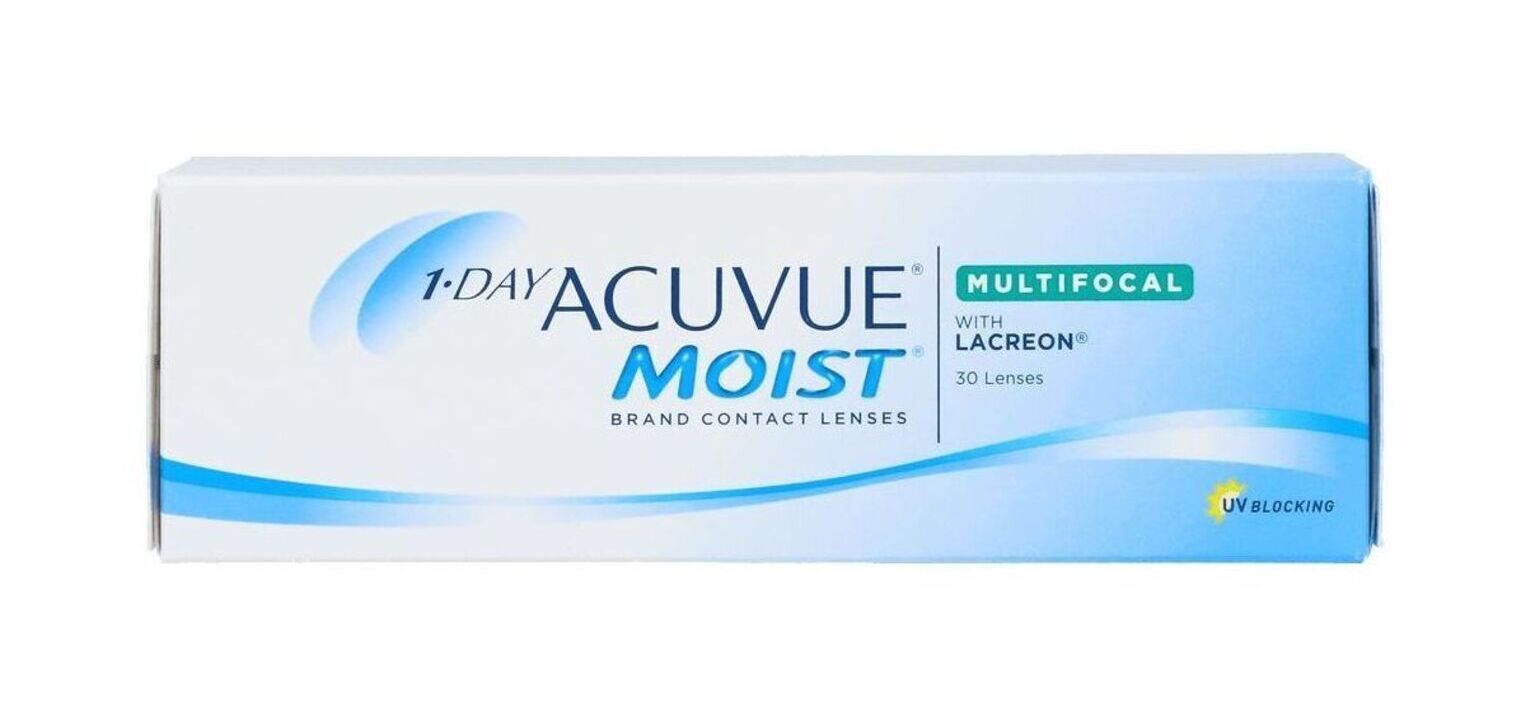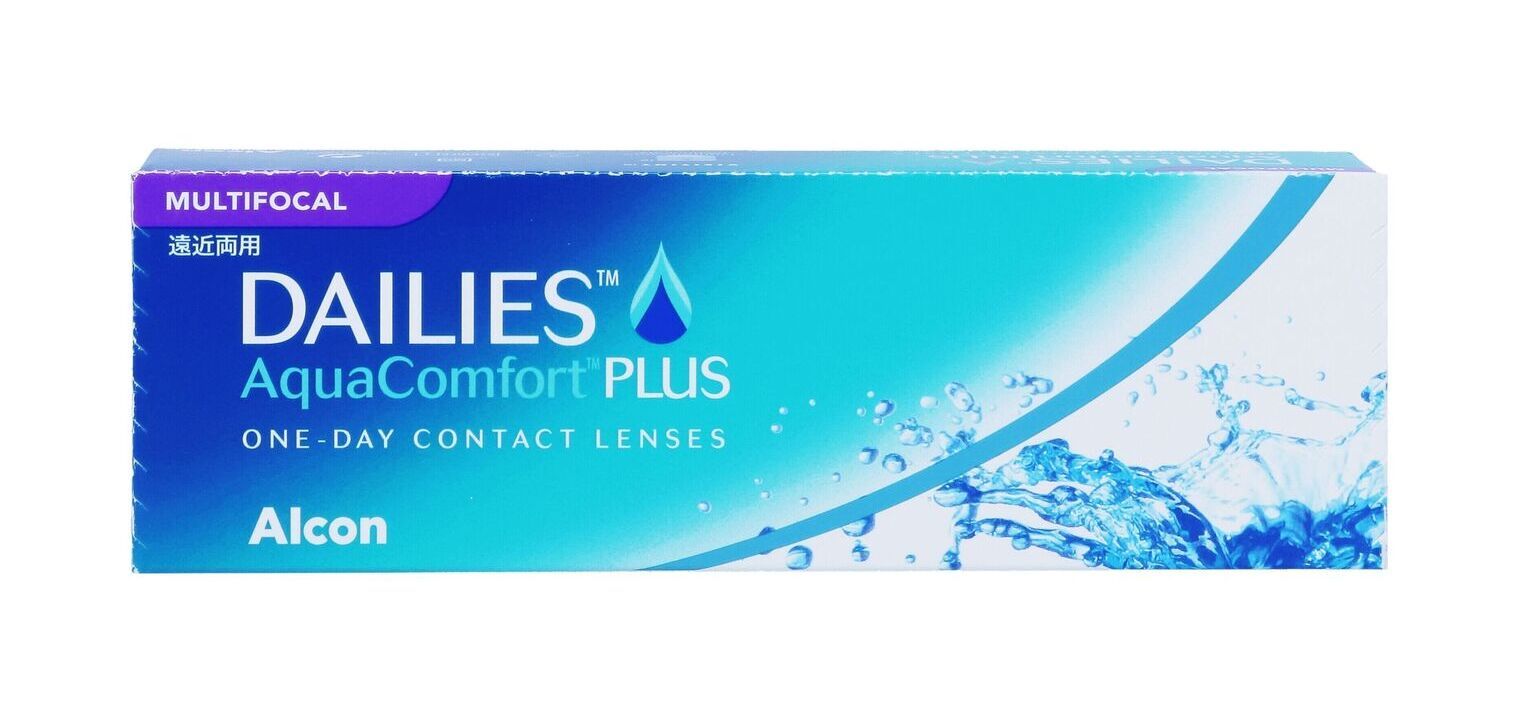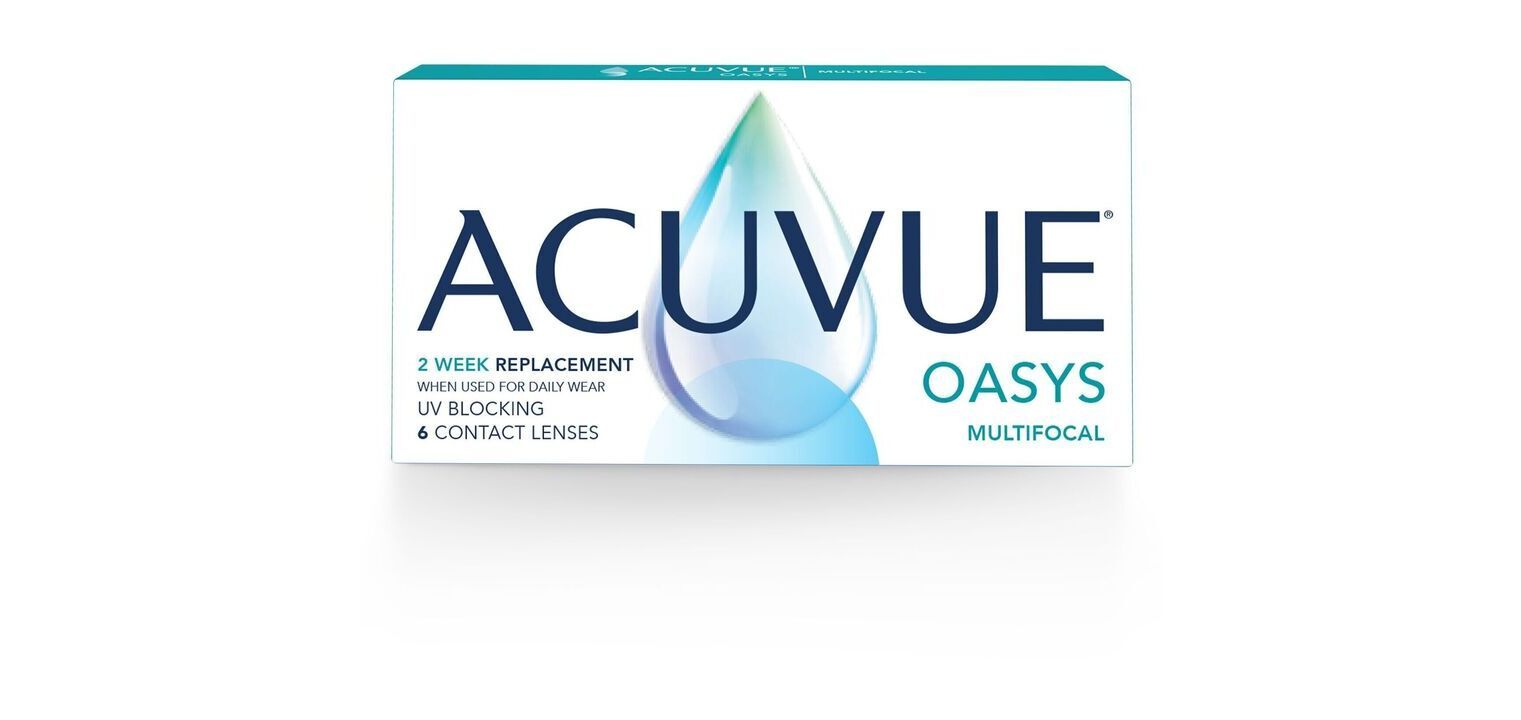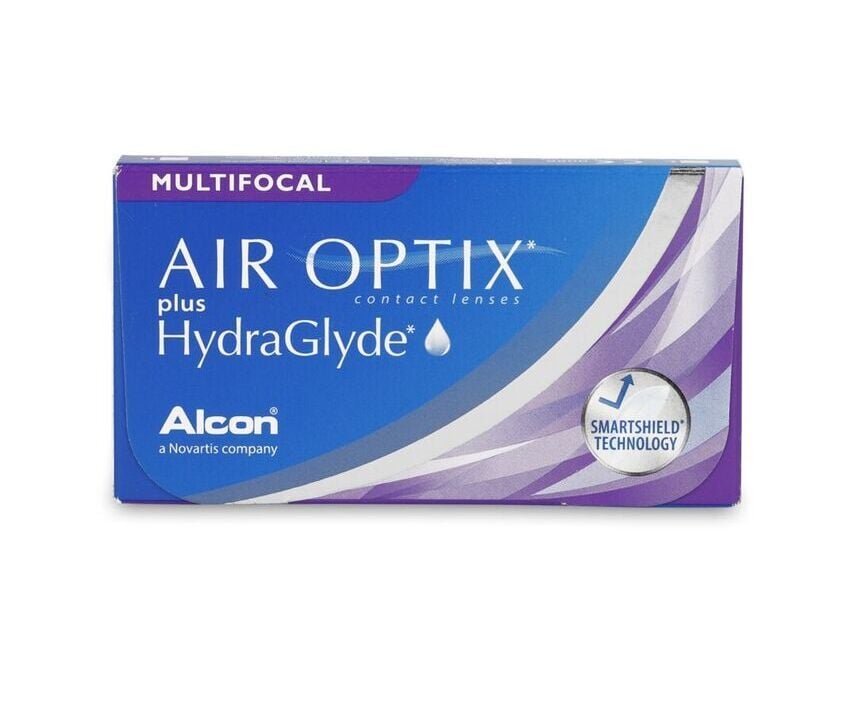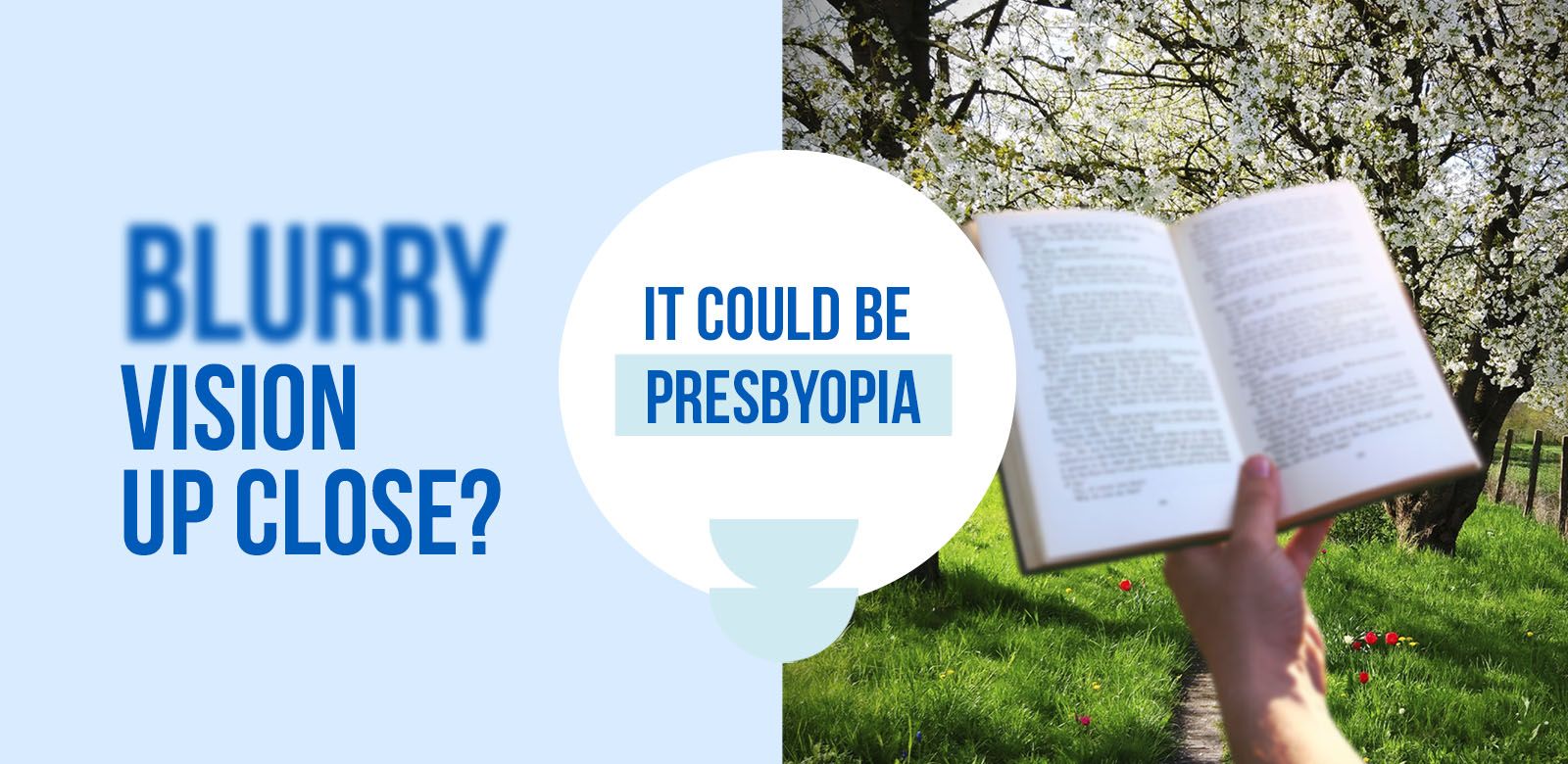

Do you have trouble reading small print? Do you find yourself needing to hold your book at a distance in order to read better? These are probably the first signs of presbyopia, a visual disorder that generally occurs around the age of 40.
In this article, find out what presbyopia is, why it occurs and what the best solutions are for regaining clear vision.
What is presbyopia?
Presbyopia is a visual disorder linked to the natural aging of the eye, which affects over 24% of the world's population.1
Unlike a disease, it is a completely normal physiological phenomenon: with age, the crystalline lens gradually loses its flexibility and becomes more rigid. The sharpness of near objects deteriorates, resulting in blurred vision, as illustrated in the image below.
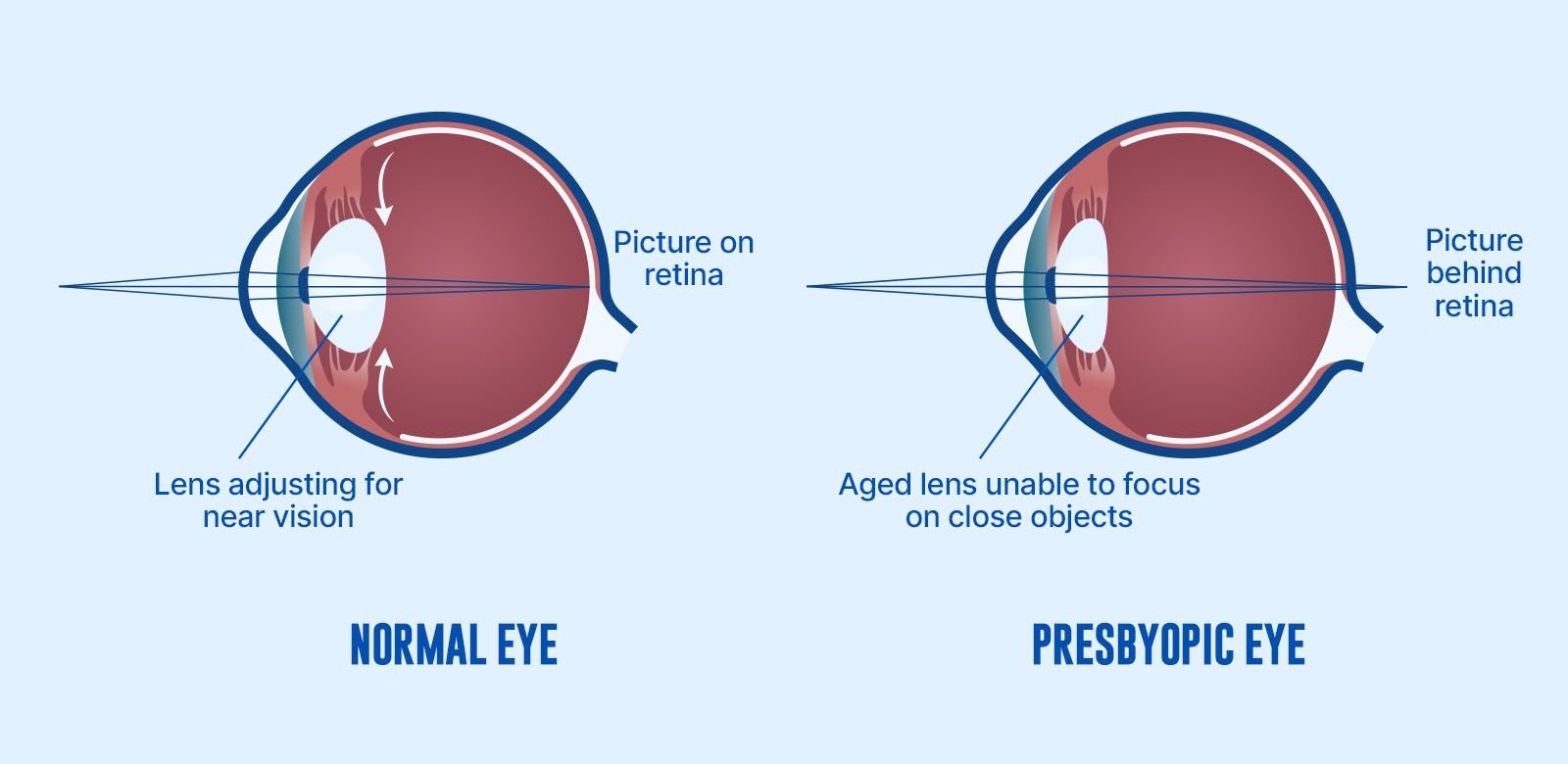

However, distance vision remains intact, distinguishing it from other visual disorders such as myopia. In the normal eye, the crystalline lens adjusts its shape to focus sharply on nearby objects. In presbyopia, however, the lens has become less flexible and can no longer bend sufficiently. The image of a close object then forms behind the retina instead of directly on it, resulting in blurred near vision.
What factors accelerate presbyopia?
As explained, presbyopia is a natural phenomenon that occurs with age. However, certain factors can accelerate its onset or intensify its effects.
-
People who work a lot with screens: Intensive use of screens (computers, phones and tablets) can accelerate presbyopia. The constant strain on the eyes for near vision leads to visual fatigue, making it harder to focus.
-
Hypermetropes: People with hypermetropia (distance vision sharper than near vision) are already compensating for a lack of accommodation in their vision. With the onset of presbyopia, this compensation becomes more complicated, which can accelerate its effects.
Please note: This disorder also affects myopic people. As they naturally see well up close, they often have the impulse to remove their glasses to read or look at an object up close. This may work temporarily, but over time, the visual degeneration progresses and makes this compensation insufficient.
What are the first signs of presbyopia?
The first changes in your eyesight may go unnoticed at first, but they can become increasingly troublesome. Here are the main symptoms to watch out for.
1. You move objects further away from you in order to see better
If you instinctively stretch out your arm to read a text, this is one of the first signs that you might have a problem with your visual health.
2. You experience increased eye fatigue
A feeling of discomfort or fatigue after reading, working on a screen or performing close-up tasks can be a sign of presbyopia. This is because your eyes have to make an extra effort to adjust and compensate for any visual issues in order to ensure your vision quality when you carry out these tasks.
3. You have trouble seeing in dimly lit environments
Presbyopes often need stronger lighting to read or perform precision tasks, as a lack of light makes it more difficult for your eyes to focus up close. As we age, the crystalline lens loses its flexibility, making close-up focusing more difficult. What's more, in low light, the pupil dilates, reducing depth of field and accentuating the blurring of close-up objects.
4. You have frequent headaches
Migraines or a feeling of tension in the eyes, especially after prolonged visual effort, can be linked to overcompensation for presbyopia.
5. You take off your distance glasses to improve your near vision (if you're myopic)
If you're short-sighted and feel that your near vision improves when you take off your glasses, this may be an indicator that presbyopia is progressing.
If you notice any of these signs, it's essential to have your eyes checked by your ophthalmologist. Presbyopia evolves with age. Regular follow-up is therefore essential to adapt your correction and maintain clear vision on a daily basis.
What solutions exist to correct presbyopia?
There are several solutions for correcting presbyopia, each with its advantages and disadvantages:
-
Glasses: an effective solution, but one that restricts freedom of movement. In addition, progressive lenses for presbyopes represent a major investment, and can be expensive.
-
Surgery: a definitive solution, but invasive, costly and non-reversible.
-
Contact lenses: a practical and economical alternative, offering clear vision at all distances and exceptional everyday comfort.
Multifocal lenses: a practical, economical solution for presbyopia
Multifocal contact lenses offer a smooth transition between near, intermediate and distance vision, guaranteeing sharp vision at all distances, without the need to change correction throughout the day.
In addition to their comfort, they offer a more economical alternative to progressive glasses, which require a high initial investment and costly replacement.
What type of frequency should I choose?
The choice between daily, bi-monthly or monthly will depend not only on your lifestyle, but also on your budget.
Here are the advantages and costs to consider when making your choice:
-
Daily lenses are ideal for occasional use (ideal for sports activities) or if you're looking for a maintenance-free solution. Designed to be single-use, they need to be discarded every evening, eliminating the need for cleaning and reducing the risk of irritation. However, this comfort comes at a slightly higher cost: for example, Dailies Total 1 Multifocal are available at CHF 48.90 for one month's wear.
-
As for bi-monthly contact lenses, they offer a good compromise between budget and replacement frequency. They are more affordable than daily lenses, while requiring less maintenance than monthly lenses. However, they do require daily cleaning with an appropriate solution. Acuvue Oasys Multifocal lenses are available at CHF 57.90 for 6 lenses (six weeks), or around CHF 38.60 per month.
-
Finally, monthly contact lenses are the most economical solution for daily wear. Although they require more rigorous care, they remain by far the most economical solution in the long term. However, to guarantee comfort and hygiene, the use of a multifunctional solution such as Opti-Free or Aosept is essential. The Air Optix HydraGlyde Multifocal model is available at CHF 66.90 for 6 lenses (six months), or around CHF 11.15 per month.
Our tips: Reduce your expenses even further with the AboMax lens subscription, enjoying 15% for life on your orders. You'll automatically receive your order at home, at the frequency of your choice!
How to adapt to your multifocal lenses
Multifocal lenses offer great everyday comfort, but a period of adaptation is often necessary. This may vary for each individual.
To ease the transition, here's our advice:
-
Start with gradual wear: gradually increase the wearing time each day.
-
Wear them regularly: daily use speeds up adaptation.
-
Be patient: your brain needs to get used to dealing with the different correction zones of the lenses.
Presbyopia is inevitable, but thanks to multifocal contact lenses, you can regain clear vision at all distances, without the inconvenience of glasses.
Ready to choose comfort and freedom? Consult a specialist to find your ideal lenses!
FAQ: other frequently asked questions about presbyopia
No, but if left uncorrected, it can lead to increased visual fatigue, headaches and difficulty concentrating.
Yes, it generally progresses between the ages of 40 and 60 before stabilizing. That's why it's important to adapt your correction regularly.
Yes, and it's a frequent combination. Presbyopic myopes see well up close without glasses, but experience blurred vision at a distance. Solutions such as multifocal lenses or progressive lenses can correct both problems simultaneously.
It is not possible to prevent presbyopia, but certain habits can slow its impact:
-
Reduce screen time and take regular breaks.
-
Use good lighting for reading and precision work.
-
Eat a diet rich in antioxidants (vitamins A, C, E) to preserve eye health.
1. Source: Markoulli, M., Fricke, T. R., Arvind, A., et al. (2024). BCLA CLEAR Presbyopia: Epidemiology and impact.








